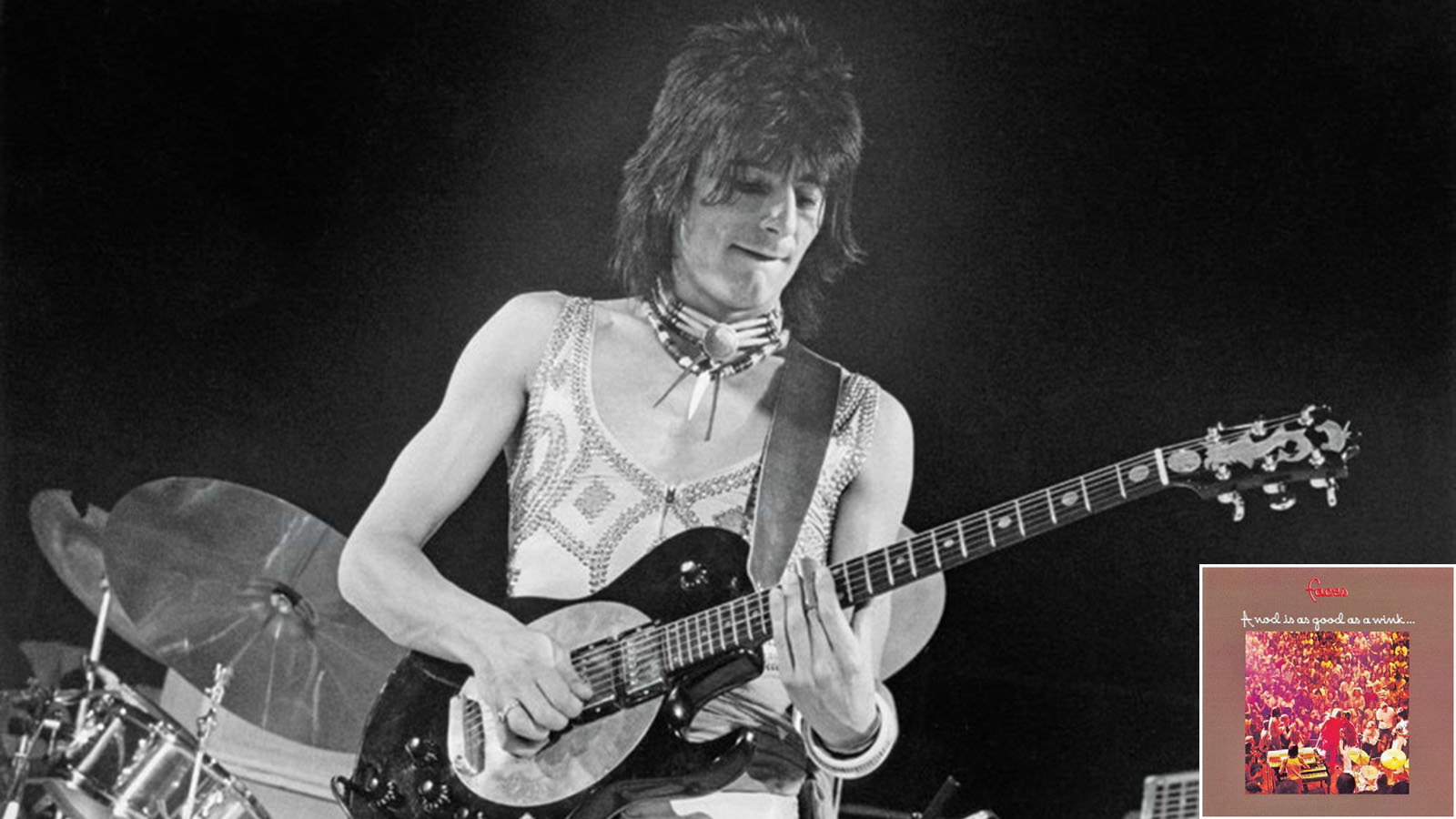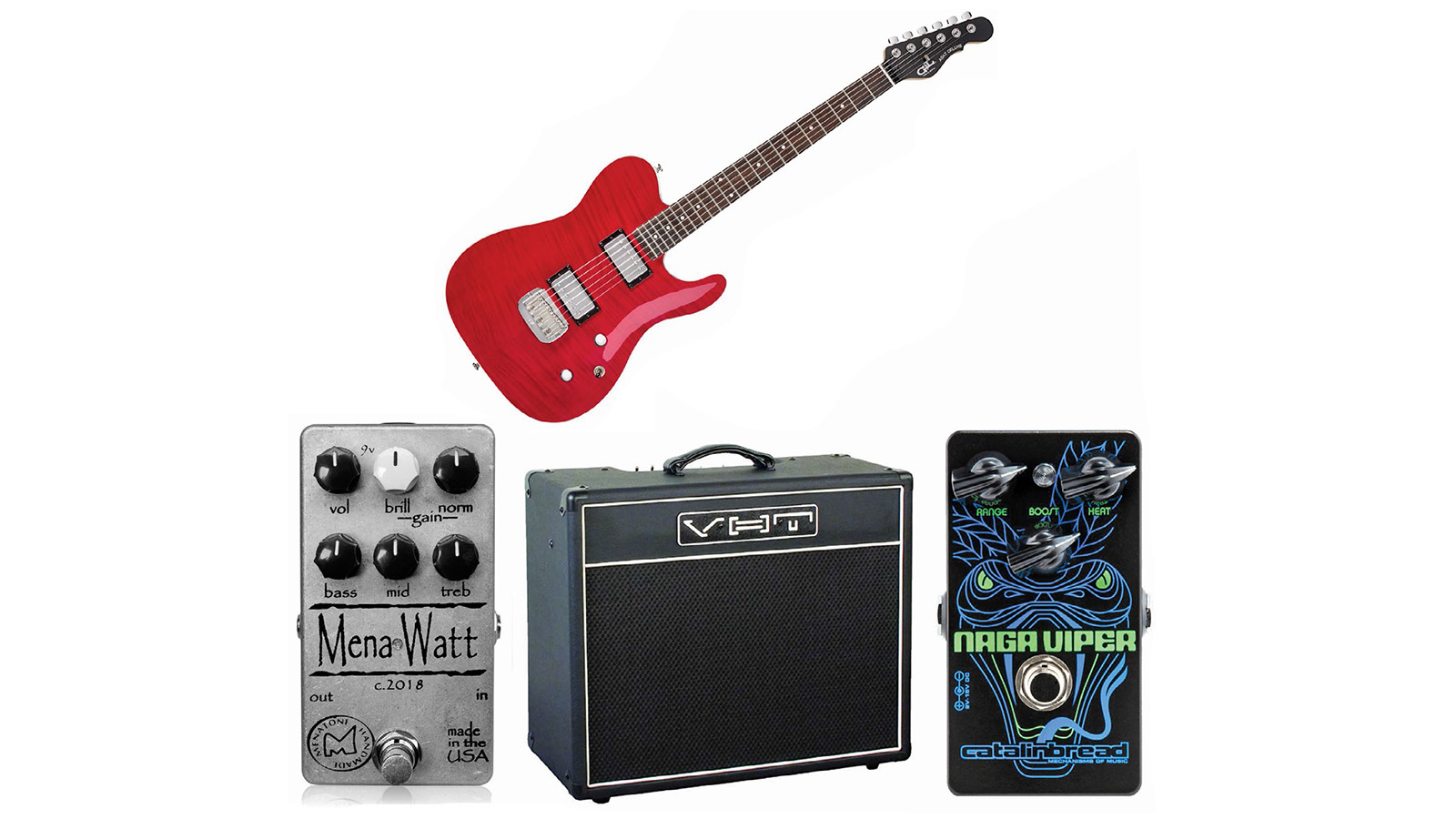The secrets behind Ronnie Wood's crunchy tone on the Faces' Stay with Me
Ronnie Wood’s rhythm track on the Faces’ classic Stay with Me is one of the raunchiest guitar tones of all time. Learn how he got it

One of the raunchiest guitar tones of all time, Ron Wood’s rhythm track on the Faces’ classic Stay with Me is a great example of how a relatively simple rig can be so much more than the sum of its parts. In essence, Wood used just a guitar and an amp, but his signature tone has eluded imitators and befuddled tone geeks for decades.
The guitar Wood used on the song is no mystery: a Zemaitis “disc-front” solidbody that Tony Zemaitis custom built for him in the early '70s and that Wood calls the Stay with Me guitar for obvious reasons.
Equipped with three Gibson PAF humbuckers, each with its own volume and tone controls and individual push switches that enabled any conceivable combination of the three pickups, the Zemaitis also features a distinctive circular aluminum “scratch plate” that enhances the guitar’s natural resonance.
But perhaps the most important feature of the disc-front Zemaitis when it comes to decoding this song’s guitar tone is its built-in battery-powered booster, which is engaged by pulling up the master volume control on the upper bout. The circuit is a mystery, but considering its timeframe it’s likely based on a germanium transistor treble booster - the distinctive midrange growl it produces certainly suggests that.
The bigger mystery is the amp that Wood used. Fortunately, Wood revealed that exact detail in the November/December 2015 issue of Guitar Aficionado where he emphatically stated it was a Hiwatt.
Although tone snobs argue that an early Hiwatt’s tone is too clean, these amps can get quite nasty when pushed hard (check out the Who’s Live at the Isle of Wight Festival or Led Zeppelin at the Royal Albert Hall) and the Zemaitis’ booster adds delicious rasp and grit that has fooled many into thinking Wood used a tweed amp.
Having the guitar tuned to open E is the cherry on top, providing a generous amount of unison-note clang that makes the tone even more resonant.
Get The Pick Newsletter
All the latest guitar news, interviews, lessons, reviews, deals and more, direct to your inbox!
Get the sound, cheap!

- G&L Tribute Series ASAT Deluxe Carved Top
- VHT Special 6 Ultra
- Menatone MenaWatt
- Catalinbread Naga Viper
TONE TIP: Wood’s rig is difficult to duplicate inexpensively, but a guitar with a PAF-style humbucker, something like the Menatone pedal that provides Hiwatt-style tones, and a Rangemaster-style treble booster like the Naga Viper will get you most of the way there. Use a slightly overdriven amp setting and let the pedals provide the grit.
Original gear
GUITAR: Zemaitis “disc-front” solidbody with 24-fret ebony fingerboard, set neck, 25.6-inch scale and three Gibson PAF humbucking pickups (bridge pickup), volume: 10, tone: 8, master/active boost: on/8
AMP: 969 Hiwatt DR103 100-watt head (Normal Volume: 7, Brilliant Volume: 8, Bass: 5, Treble: 5, Middle: 7, Presence: 4, Master Volume: 9, bottom Normal input, top Normal input jumpered to bottom Brilliant input); 1969 Hiwatt SE4122 4x12 cabinet with 12-inch Fane 122142 speakers
EFFECTS: None
STRINGS/TUNING: Ernie Ball Super Slinky .009-.042/Open E (E, B, E, G#, B, E)
PICK: Manny’s Music Heavy, ¾-inch diameter copper pipe Slide
Chris is the co-author of Eruption - Conversations with Eddie Van Halen. He is a 40-year music industry veteran who started at Boardwalk Entertainment (Joan Jett, Night Ranger) and Roland US before becoming a guitar journalist in 1991. He has interviewed more than 600 artists, written more than 1,400 product reviews and contributed to Jeff Beck’s Beck 01: Hot Rods and Rock & Roll and Eric Clapton’s Six String Stories.
“You might laugh a little. The post office shipped your guitar to Jim Root”: This metal fan ordered a new guitar from Sweetwater – but it ended up with the Slipknot guitarist
“I hope they never do one of Van Halen. I told Wolfie, ‘Make sure I’m dead’”: Eddie Van Halen's former wife, Valerie Bertinelli, rules out Van Halen biopic





![John Mayer and Bob Weir [left] of Dead & Company photographed against a grey background. Mayer wears a blue overshirt and has his signature Silver Sky on his shoulder. Weir wears grey and a bolo tie.](https://cdn.mos.cms.futurecdn.net/C6niSAybzVCHoYcpJ8ZZgE.jpg)

![A black-and-white action shot of Sergeant Thunderhoof perform live: [from left] Mark Sayer, Dan Flitcroft, Jim Camp and Josh Gallop](https://cdn.mos.cms.futurecdn.net/am3UhJbsxAE239XRRZ8zC8.jpg)



